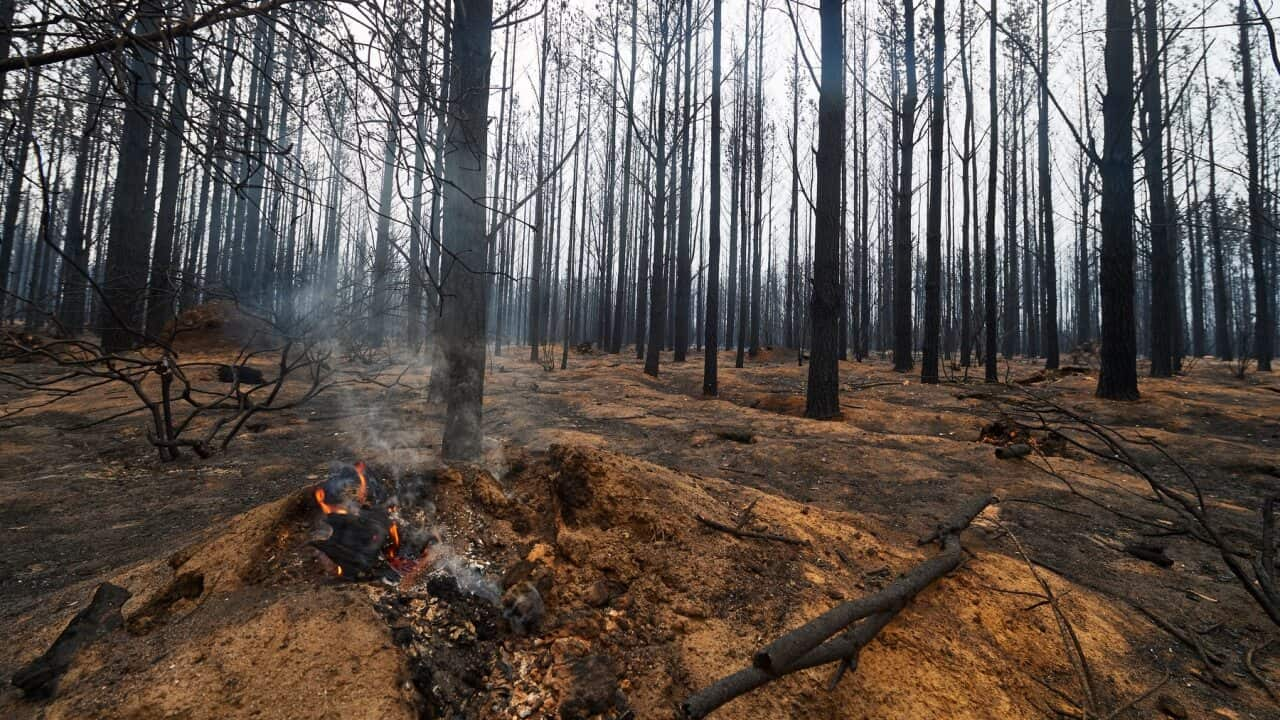At the height of the summer bushfires, Bundjalung man and Firesticks CEO Oliver Costello reached out to the leader of the Emergency Leaders for Climate Action (ELCA) Greg Mullins, to open a dialogue on Indigenous-led land management and burning practices.
"At the time he said 'I'm super keen, but I'm not really sure what I can do'," Mr Costello told NITV, "and now I think he reflects on that and thinks he could have done more."
Following six months of discussions, Mr Costello said he encountered others in positions of influence who were similarly struggling to know how to integrate Indigenous knowledge into the fire fighting processes.
"A National Indigenous-led cultural fire strategy might inform some of those senior decision-makers what they can do, and a lot of the things they can do to start to build long-term relationships that empower Indigenous voices and land management practices," said Mr Costello.
"Because you can't just turn and around and say 'we want to do this in a few months'. It takes years to build the policy, and the regulatory frameworks, and the investment frameworks, and the capacity to engage in those organisations." Mr Costello said many of those with the skills and knowledge were being hampered by red tape.
Mr Costello said many of those with the skills and knowledge were being hampered by red tape.

Indigenous fire management practices include the work of the Return of the Firestick project. Source: NITV News
"If we go to parks and say 'we want to burn this area, we are super confident we can burn it', they'll say 'where's your burn plan? Where's your risk assessment?' and for a lot of rangers, that's too much work for them to be able to prepare,"
"Even the state agencies say 'that'll take us three months to do that'."
The complications of official process means it can take years to get burns underway when Mr Costello says his team is ready to go right now.
"The government frameworks are so rigid they restrict us. So getting a policy framework that empowers us to be able to go burn our country, to build up teams and capacity and planning - that's what we're really asking for."
The 2020 National Bushfire and Climate Summit
In June and July 2020, Emergency Leaders for Climate Action (ELCA) hosted the 2020 National Bushfire and Climate Summit. The online event brought together more than 150 people from all over the world, each aiming to share their experiences and come up with recommendations to deal with "the worsening risk of devastating bushfires fuelled by climate change".
"Greg invited myself and [nationally-recognised Traditional Burning Man] Victor Steffenson to the roundtables," said Mr Costello. "We had other ex-senior fire land management people, and people from abroad from the climate change action movement, and other NGOs and government orgs - and we were all talking about the bushfires and our response to it." The Australian Bushfire and Climate Plan was created and put forward 165 recommendations that are able to be implemented immediately.
The Australian Bushfire and Climate Plan was created and put forward 165 recommendations that are able to be implemented immediately.

Victor Steffensen demonstrating at the National Indigenous Fire Workshop 2014 Source: National Indigenous Fire Workshop
They fall into three categories - Response, Readiness and Recovery.
The number one "readiness" recommendation is to "create an Indigenous-led National Cultural Fire Strategy to complement and inform fuel management by agencies".
Mr Costello said a nation wide approach is key and it is therefore vital that they secure federal and state government support. "We need something that's at a higher level, so we don't get caught up on state agency bureaucracy, and we can work across geographical and state and territory boundaries."
We have the knowledge
When it comes to controlled burning, Mr Costello said the local people- the custodians - need to be leading the planning and implementation. They hold the knowledge of where to burn and an understanding of the localised relationships between the plants and animals. "But across the nation, the problem is we are not funded. We're not recognised. Our knowledge is not the "best practice" knowledge applied on Country - even though it's worked for thousands of years," said Mr Costello.
"So it's really trying to get that understanding. We have this knowledge, and we want our communities to be able to practice that knowledge and expand our knowledge base." Other recommendations to improve “readiness” include better resources for fire and land management agencies, aerial firefighting, and better use of the Australian Defence Force in emergencies. And for the communities in disaster-prone areas, the plan calls for a more affordable and available insurance for properties ( cited as a key factor in community resilience) and a review and update of Australian building standards in bushfire-zones.
Other recommendations to improve “readiness” include better resources for fire and land management agencies, aerial firefighting, and better use of the Australian Defence Force in emergencies. And for the communities in disaster-prone areas, the plan calls for a more affordable and available insurance for properties ( cited as a key factor in community resilience) and a review and update of Australian building standards in bushfire-zones.

Queensland’s first cultural all-women planned burn at a sacred women's place was held this year. Source: QLD Government
For “recovery”, a national climate disaster fund paid by fossil fuel producers and better funding for wildlife recovery.


